Abstract
In the present study the distance dependence of tryptophan-disulfide interaction is examined with a view to both utilizing the interaction as a more quantitative indicator of subtle conformational changes in proteins as well as elucidating the interaction mechanism. To examine perturbations specifically at the indole triplet level 2-(3-indolyl)-ethyl phenyl ketone (IEPK) in which excitation is transferred with high efficiency to the triplet state of the indole moiety was employed. Phosphorescence decays of IEPK excited by a laser pulse in 70/30 (vol/vol) ethanolether at 77 K were measured in the presence of various concentrations of simple disulfides. The nonexponential phosphorescence decays arising from a distribution of fixed chromophoreperturber separations and the steady-state quenching of IEPK were accounted for with an exponential dependence of the quenching rate constant with distance. The small effective Bohr radius (0.8 A) that appears in the exponent emphasizes the localized nature of the interaction. Comparison of the triplet quenching rate constant obtained at quencher contact with IEPK to that estimated in proteins suggests a dependence on the triplet energy of the indole moiety and an endothermic nature for the quenching process. The study predicts that in proteins tryptophan-disulfide interactions are very localized in nature and should give rise to detectable anomalous decays only out to 2 A beyond van der Waals contact between the interacting partners.
Full text
PDF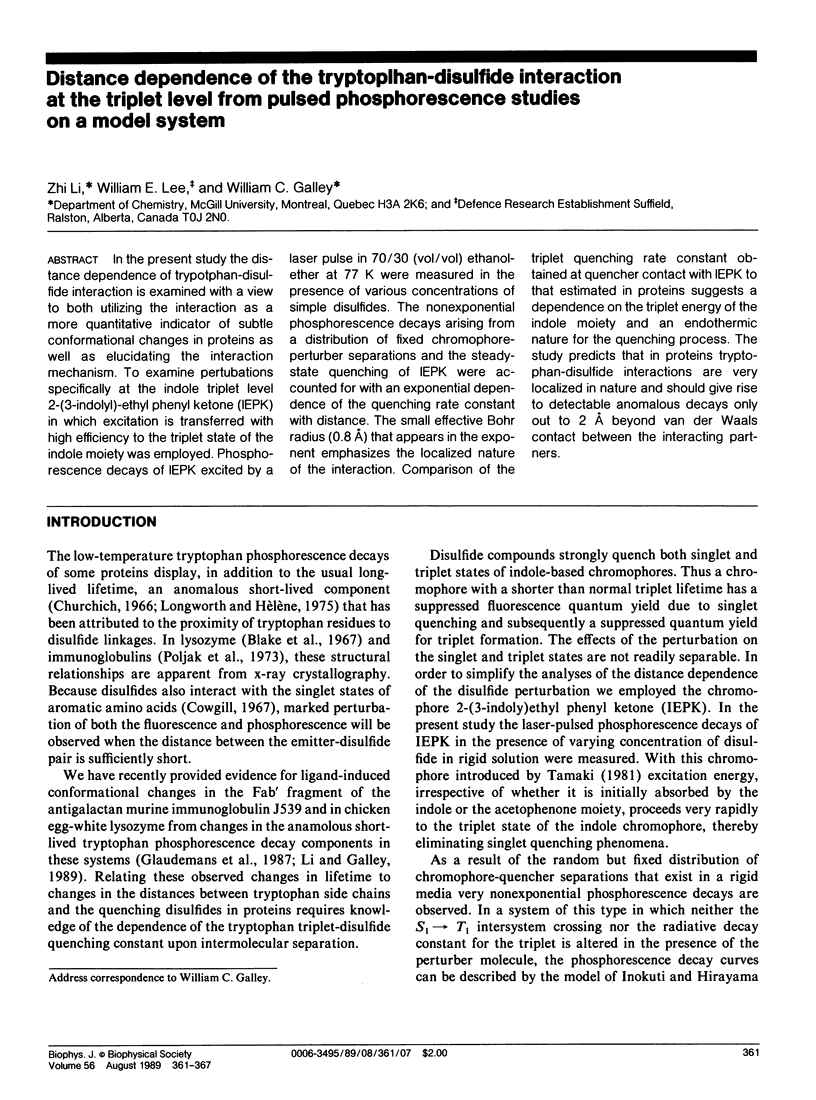
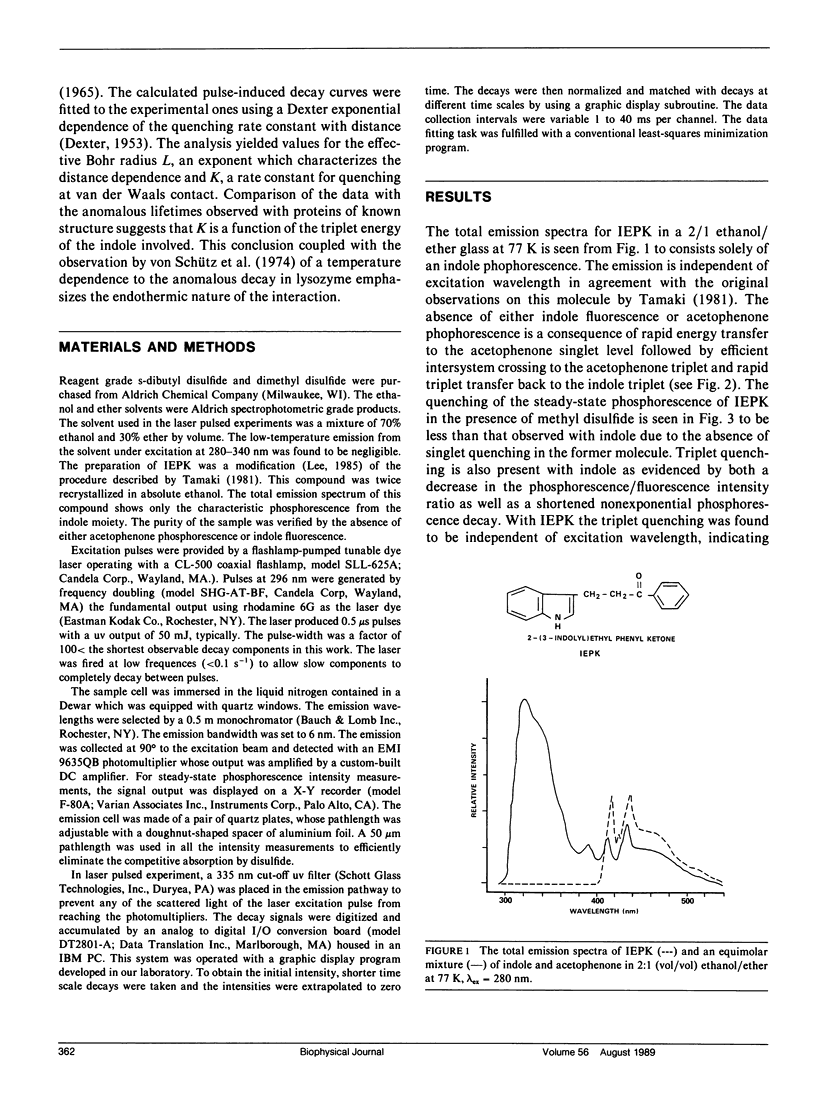
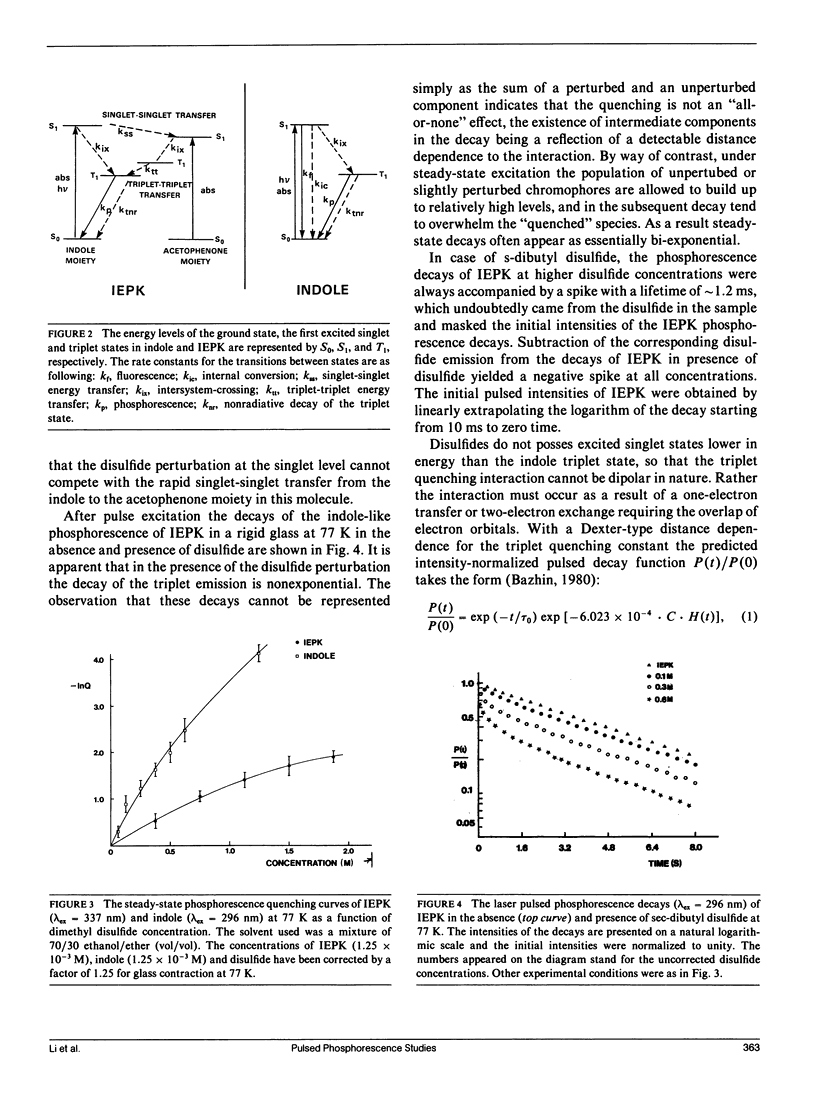
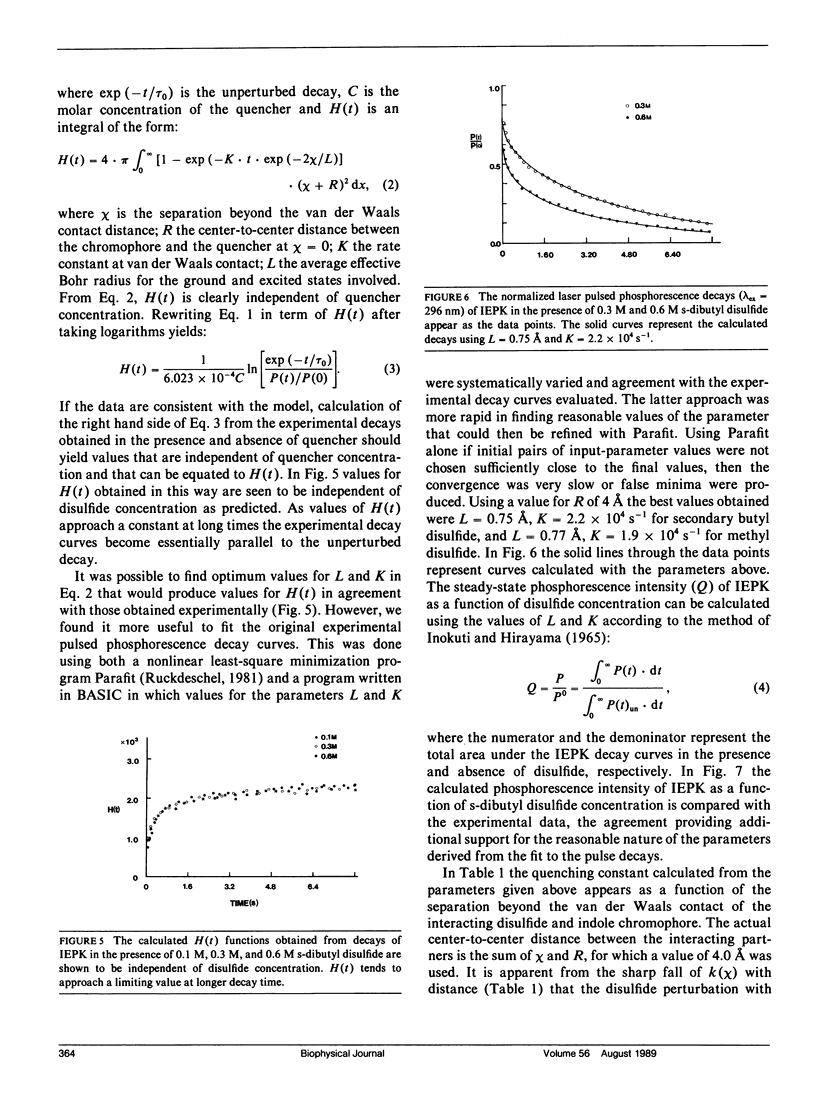
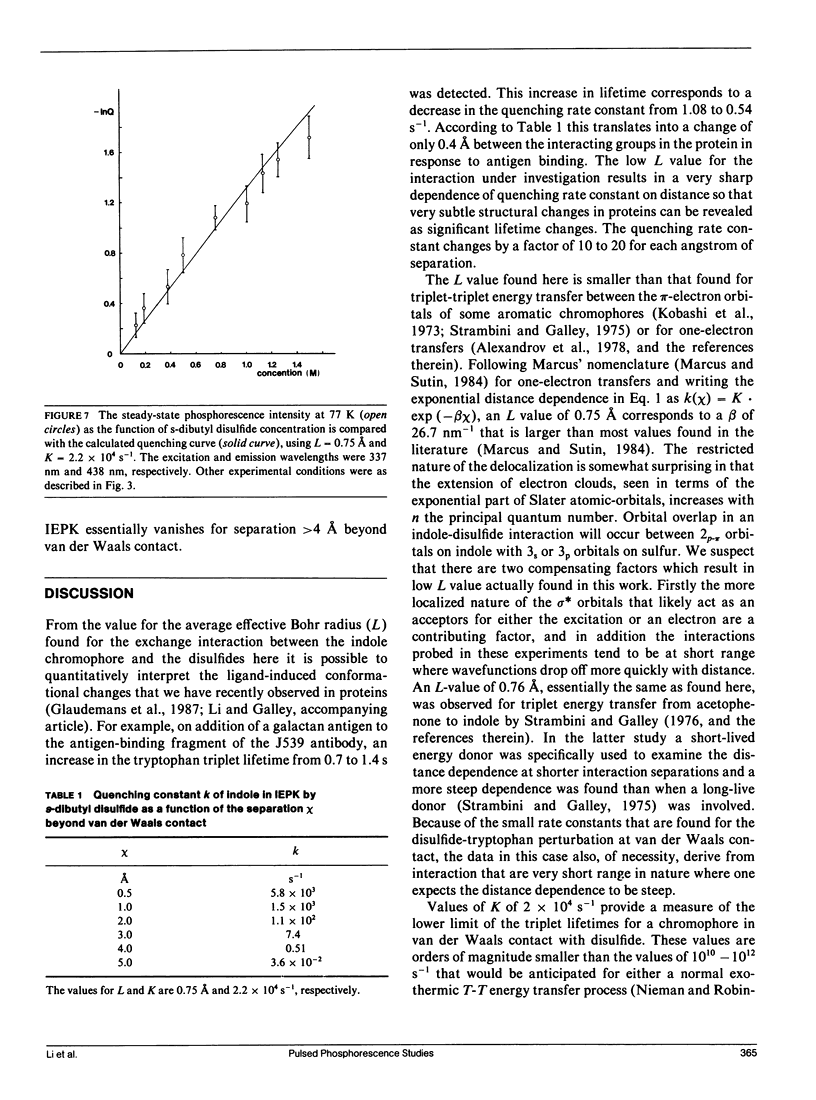
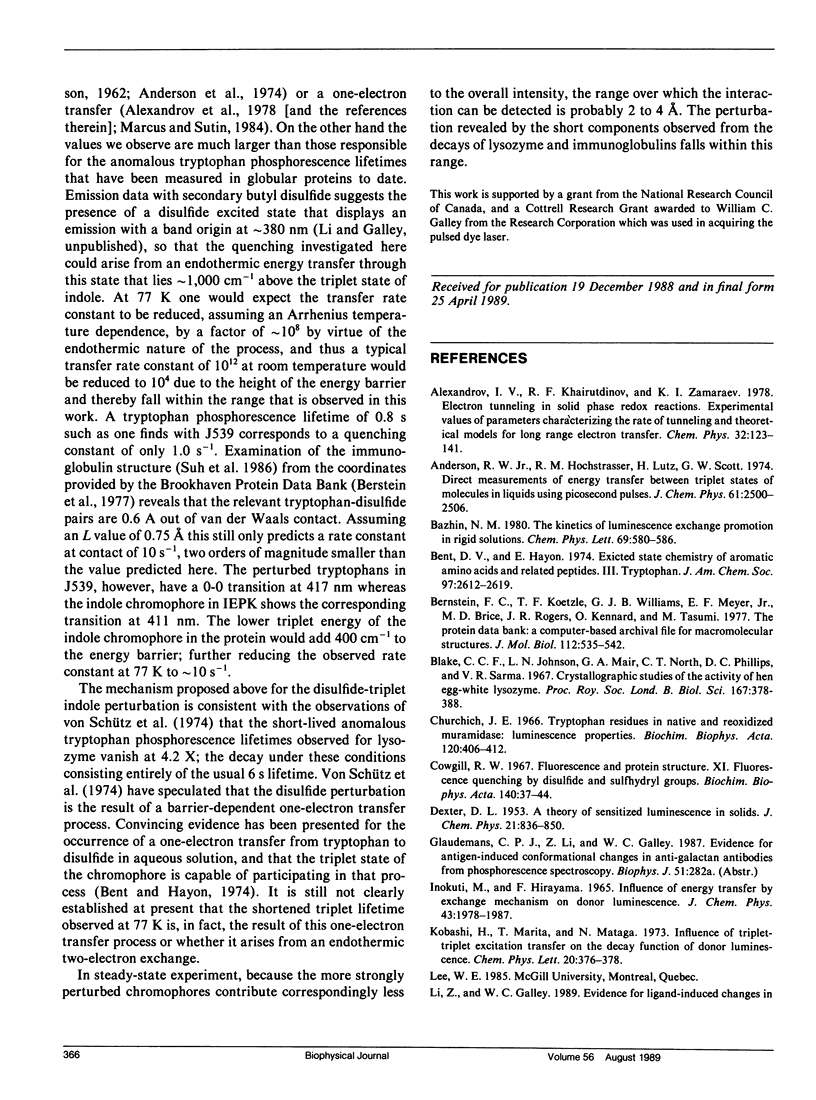
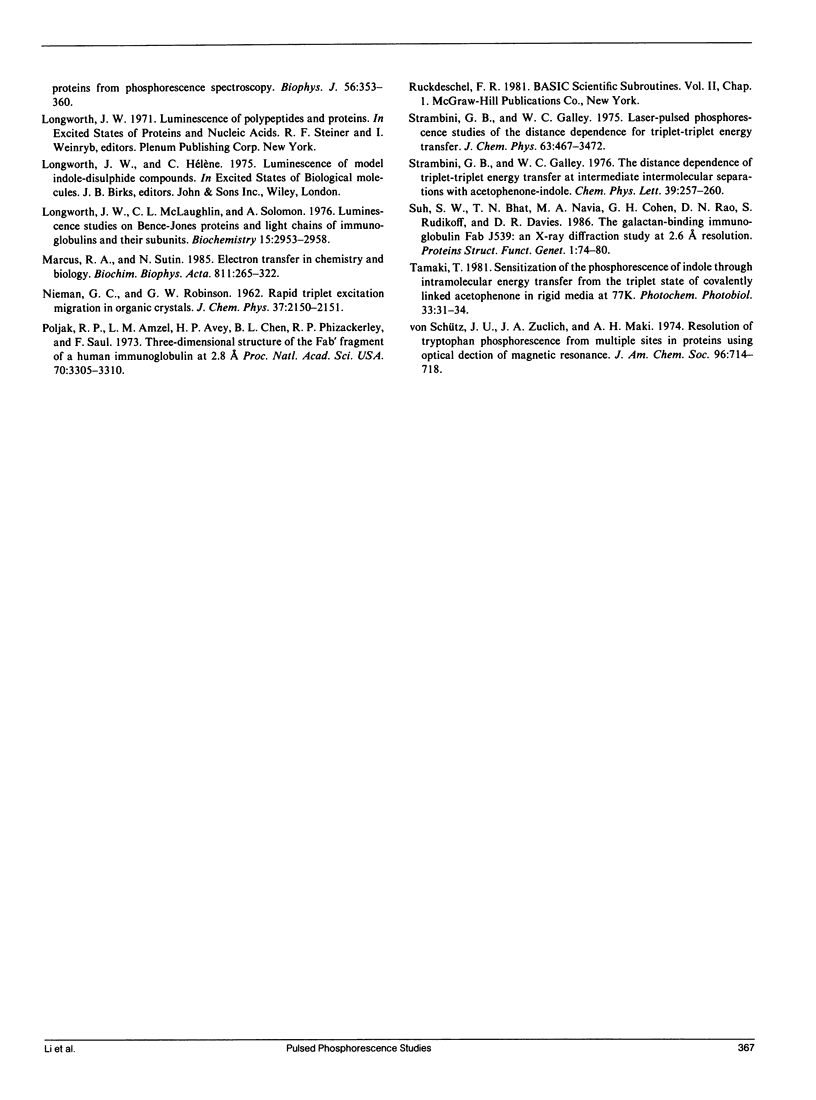
Selected References
These references are in PubMed. This may not be the complete list of references from this article.
- Bent D. V., Hayon E. Excited state chemistry of aromatic amino acids and related peptides. III. Tryptophan. J Am Chem Soc. 1975 May 14;97(10):2612–2619. doi: 10.1021/ja00843a004. [DOI] [PubMed] [Google Scholar]
- Bernstein F. C., Koetzle T. F., Williams G. J., Meyer E. F., Jr, Brice M. D., Rodgers J. R., Kennard O., Shimanouchi T., Tasumi M. The Protein Data Bank: a computer-based archival file for macromolecular structures. J Mol Biol. 1977 May 25;112(3):535–542. doi: 10.1016/s0022-2836(77)80200-3. [DOI] [PubMed] [Google Scholar]
- Blake C. C., Johnson L. N., Mair G. A., North A. C., Phillips D. C., Sarma V. R. Crystallographic studies of the activity of hen egg-white lysozyme. Proc R Soc Lond B Biol Sci. 1967 Apr 18;167(1009):378–388. doi: 10.1098/rspb.1967.0035. [DOI] [PubMed] [Google Scholar]
- Churchich J. E. Tryptophan residues in native and reoxidized muramidase: luminescence properties. Biochim Biophys Acta. 1966 Jul 13;120(3):406–412. doi: 10.1016/0926-6585(66)90307-4. [DOI] [PubMed] [Google Scholar]
- Li Z., Galley W. C. Evidence for ligand-induced conformational changes in proteins from phosphorescence spectroscopy. Biophys J. 1989 Aug;56(2):353–360. doi: 10.1016/S0006-3495(89)82681-5. [DOI] [PMC free article] [PubMed] [Google Scholar]
- Longworth J. W., McLaughlin C. L., Solomon A. Luminescence studies on Bence-Jones proteins and light chains of immunoglobulins and their subunits. Biochemistry. 1976 Jul 13;15(14):2953–2958. doi: 10.1021/bi00659a003. [DOI] [PubMed] [Google Scholar]
- Poljak R. J., Amzel L. M., Avey H. P., Chen B. L., Phizackerley R. P., Saul F. Three-dimensional structure of the Fab' fragment of a human immunoglobulin at 2,8-A resolution. Proc Natl Acad Sci U S A. 1973 Dec;70(12):3305–3310. doi: 10.1073/pnas.70.12.3305. [DOI] [PMC free article] [PubMed] [Google Scholar]
- Suh S. W., Bhat T. N., Navia M. A., Cohen G. H., Rao D. N., Rudikoff S., Davies D. R. The galactan-binding immunoglobulin Fab J539: an X-ray diffraction study at 2.6-A resolution. Proteins. 1986 Sep;1(1):74–80. doi: 10.1002/prot.340010112. [DOI] [PubMed] [Google Scholar]
- von Schütz J. U., Zuclich J., Maki A. H. Resolution of tryptophan phosphorescence from multiple sites in proteins using optical detection of magnetic resonance. J Am Chem Soc. 1974 Feb 6;96(3):714–718. doi: 10.1021/ja00810a014. [DOI] [PubMed] [Google Scholar]


